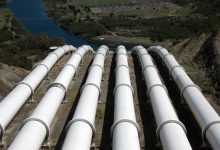A group of thirty Australian energy experts have called for a halt to the massive Snowy 2.0 pumped hydro scheme, with expectations that the project is soon to receive approval for its Environmental Impact Statement from the NSW government.
The letter, coordinated by the National Parks Association of New South Wales, says that the claimed merits of the project must be independently assessed and validated before the Snowy 2.0 project progresses to the next stage.
“We appeal to you both to commission a comprehensive public review of Snowy 2.0 and alternative energy management options before the Commonwealth Government considers its final approval for the project and the NSW Government completes its assessment of the Environmental Impact Statement,” the joint letter says.
“We request that the review be undertaken by the Productivity Commission, and/or Infrastructure Australia, and/or the Commonwealth Chief Scientist and NSW Chief Scientist & Engineer, and include independent experts of international standing.”
The environmental impact statement for the “main works” of the Snowy 2.0 project is currently being finalised by the NSW planning department. This assessment covers the establishment of a new tunnel linking the Tantangara and Talbingo reservoirs and an additional 2,000MW power station to provide new pumped hydro energy storage.
The group of signatories is calling on the project to undergo an independent review prior to any planning sign off is granted to the project, and before a final investment decision is made by the Federal government, which owns the Snowy Hydro scheme. The group is concerned that no alternative projects that may offer better economic and environmental outcomes have been considered.
“It is unbelievable that the massive Snowy 2.0 project has not been subjected to independent scrutiny, even though it is proposed by a Commonwealth Government Corporation, where the Australian taxpayer bears the risk”. Executive Officer of the National Parks Association Gary Dunnett said.
“Snowy Hydro haven’t even complied with the Environmental Planning and Assessment Regulation 2000 requiring an analysis of feasible alternatives.”
Following the approval of the main project’s environmental impact statement, it is expected that additional approval will be awarded for the completion of transmission infrastructure works will follow as a fait accompli.
Signatories to the letter calling for the process to be halted, includes list of current and former energy and planning academics, along with former senior executives from across the energy sector.
One of the letter’s signatories is Bruce Mountain, who has published a range of criticisms of the Snowy 2.0 project, questioning the amount of power that can be produced and stored by the project, as well as the economic viability of the project based on a prediction that the total cost of the project would come in at substantially more than quoted by the Morrison government.
The letter follows a range of analysis that has also been undertaken by the National Parks Association of NSW into the Snowy 2.0 project, which suggests that the claimed storage capabilities have been exaggerated, that the overall costs of the project are substantially higher than claimed, and will have a significant detrimental impact on the Kosciuszko National Park.
“Snowy 2.0 is not as it has been publicly portrayed. There are many alternatives that are more”efficient, cheaper, quicker to construct, and incur less emissions and environmental impacts – e.g. other pumped hydro, potentially even within the Snowy Scheme, batteries (especially longer duration and electric vehicles), controlled demand response, renewable hydrogen (within a decade or so),” the letter adds.
“Snowy 2.0 should not proceed on the basis of overstated claims that have never been tested. At stake are billions of dollars of Australian taxpayers’ money, tens of millions of tonnes of greenhouse gas emissions and thousands of hectares of Kosciuszko National Park.”
Snowy Hydro has rejected suggestions that the project does not stack up, issuing a point-by-point breakdown in response to the arguments against the project.
The Snowy 2.0 project has an estimated cost at more than $5.2 billion, which is expected to grow to as much as $10 billion when the follow infrastructure cost, including upgrades to transmission network infrastructure are taken into account.
The project would be expected to come online across 2024 and 2025, provided that construction works commenced later this year.
RenewEconomy will continue to publish throughout the Covid-19 crisis, posting good news about technology and project development, and holding government, regulators and business to account. But as the conference market evaporates, and advertisers pull in their budgets, readers can help by making a voluntary donation here to help ensure we can continue to offer the service free of charge and to as wide an audience as possible.










